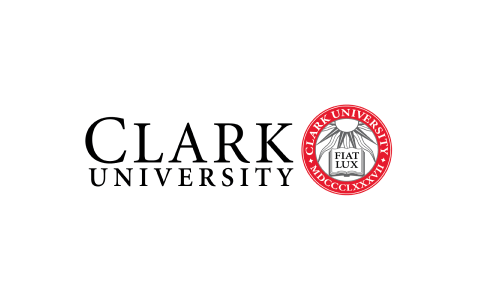Free Python Course with Certificate
Python Fundamentals for Beginners
Enroll in this free Python Fundamentals for Beginners course to enrich your knowledge of various concepts in Python. Learn to solve with programming paradigms for real-time problems in Jupyter Notebook online.
Instructor:
Mr. Bharani Akella
Ratings
Level
Learning hours

Learners
Skills you’ll Learn
About this course
This interactive online course is your gateway to the exciting world of Python programming. Whether you're a complete beginner or have dabbled in coding before, our step-by-step curriculum will equip you with the essential skills to:
- Master Python basics: Dive into the core concepts of Python, including variables, data types, libraries, operators, and strings.
- Structure your data: Conquer essential data structures like lists, dictionaries, and tuples to organize and manipulate information effectively.
- Control the flow: Craft logical programs using control flow statements (if/else, loops) and build dynamic applications.
- Write reusable code: Leverage functions to write modular and efficient code, saving time and effort.
- Earn a valuable certificate: Track your progress and showcase your newfound skills with a certificate upon completion.
You'll also get hands-on experience through:
- Interactive coding exercises: Practice what you learn in real-time, solidifying your understanding.
- Engaging quizzes: Test your knowledge and identify areas for improvement.
- Clear and concise explanations: Learn from experienced instructors who break down complex concepts into manageable steps.
Ready to enhance your skills further? Next, explore our Postgraduate Program in Artificial Intelligence and Machine Learning.
Course Outline
This section discusses how programming can benefit in performing various tasks and points out to its various industry-related applications.
This section defines and explains various variables used in any programming language.
This section discusses the relevance where conditions are involved to choose between “if” or “else” situations with real-time examples.
This section discusses how a machine performs repeating tasks until the condition is satisfied with the real-time example.
This section explains how a machine understands functions by pointing out real-time examples.
Our course instructor

Mr. Bharani Akella
Data Scientist
What our learners enjoyed the most
Skill & tools
62% of learners found all the desired skills & tools
Ratings & Reviews of this Course
Frequently Asked Questions
What is python and why is it popular among beginners?
Python is a high-level, interpreted programming language known for its simplicity and readability, making it popular among beginners.
How do i start learning python as a beginner?
Begin by understanding basic concepts like variables, data types, and control structures.
What are the key features of python?
Python's key features include simplicity, readability, a wide range of libraries, object-oriented design, and strong community support.
Is the Python Fundamentals for Beginners course a certification course?
Can python be used for web development?
Yes, Python can be used for web development.
Popular Upskilling Programs
Other IT & Software tutorials for you
Python Fundamentals for Beginners
Python is a high-level, interpreted programming language that is known for its simplicity, versatility, and ease of use. It was created by Guido van Rossum in the late 1980s and has since become one of the most popular languages for a wide range of applications, including web development, data science, machine learning, and more. In this article, we will cover some of the key fundamentals of Python programming, including syntax, data types, control structures, functions, and modules.
Syntax:
Python syntax is designed to be simple and easy to read. Unlike many other programming languages, Python does not use semicolons or parentheses to separate statements or expressions. Instead, it uses whitespace to indicate the structure of the code. Python relies on indentation to indicate blocks of code, making it easy to read and understand.
Data Types:
Python supports a variety of data types, including integers, floats, strings, Booleans, lists, tuples, and dictionaries. Integers are whole numbers, floats are numbers with decimal points, strings are sequences of characters enclosed in quotes, Booleans are logical values that can be either True or False, lists are ordered collections of objects, tuples are similar to lists but are immutable, and dictionaries are unordered collections of key-value pairs.
Control Structures:
Control structures are used to control the flow of a program. Python supports several control structures, including if statements, for loops, and while loops. If statements are used to execute code if a certain condition is true. For loops are used to iterate over a sequence of values, while loops are used to execute code repeatedly as long as a certain condition is true.
Functions:
Functions are reusable blocks of code that perform a specific task. In Python, functions are defined using the def keyword, followed by the function name, parentheses, and a colon. The body of the function is indented, and the function can accept arguments and return values. Functions are used to encapsulate code, making it easier to manage and maintain. They can also be used to modularize a program and break it into smaller, more manageable pieces.
Modules:
Modules are collections of functions and variables that can be imported into a program to extend its functionality. Python has a large standard library of modules that provide a wide range of functionality, including math operations, file I/O, and network programming. Modules can be imported using the import keyword, and their functions and variables can be accessed using dot notation.
Python is a powerful and versatile language that is used by developers, data scientists, and machine learning experts around the world. Its simple syntax, wide range of data types, powerful control structures, reusable functions, and extensible modules make it an ideal choice for a wide range of applications. Whether you are a beginner or an experienced programmer, Python has something to offer.

































